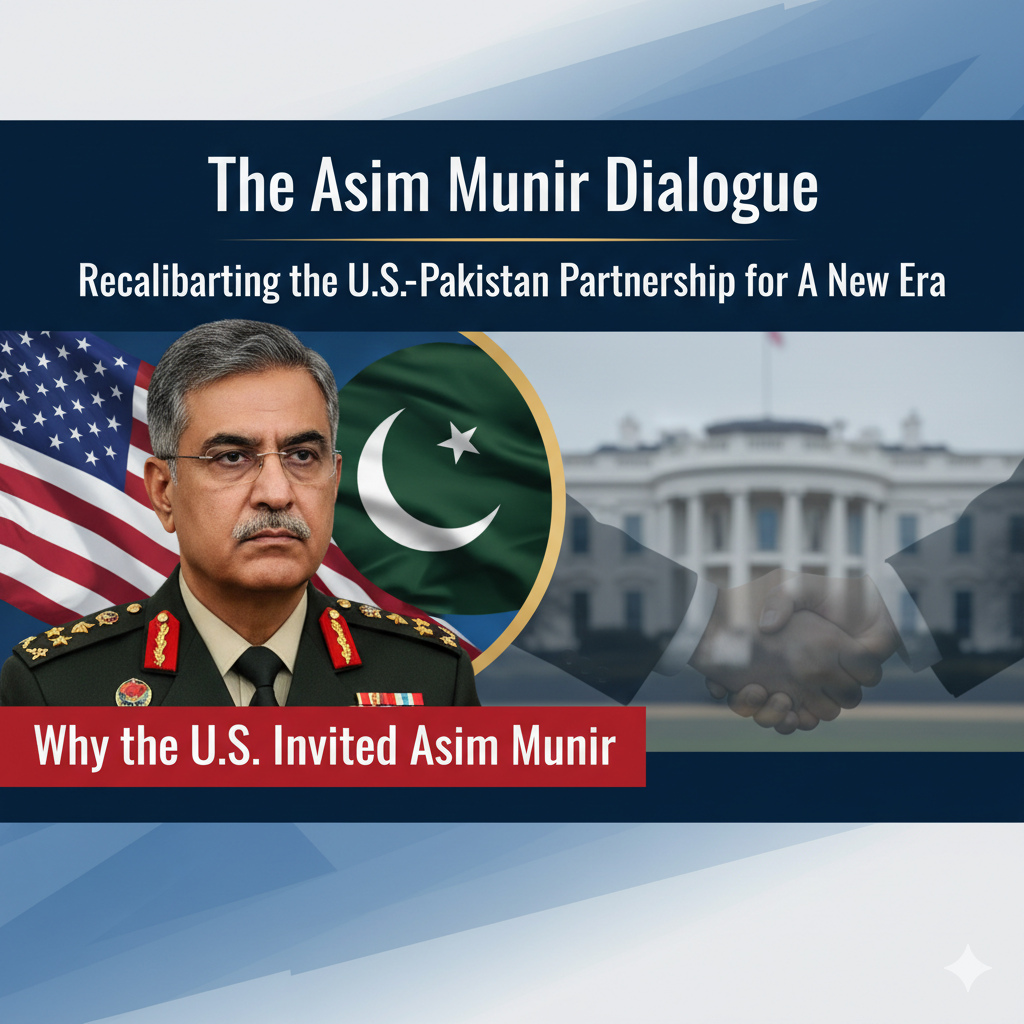Introduction: A Pivotal Dialogue in a Time of Transition
Some international dialogues carry weight far beyond their official agendas. Washington’s invitation to Pakistan’s Army Chief, General Asim Munir, represents such a moment. This meeting signals a conscious effort to forge a new partnership. For decades, the U.S.-Pakistan relationship followed a transactional pattern. It peaked during regional conflicts before fading into distrust. Today’s changed world demands a new approach. The Afghanistan withdrawal and great power competition require a sustainable footing. This article explores the motivations behind the Asim Munir dialogue.
The Asim Munir Dialogue: Recalibrating the U.S.-Pakistan Partnership for a New Era
The Shifting Strategic Landscape
The old strategic framework has disappeared. The post-9/11 era focused on counterterrorism and Afghanistan. That approach no longer works. Today’s region features a resurgent Taliban, an assertive China, and an unstable Pakistan. This complex situation explains why the U.S. invited Asim Munir. American leaders recognize two key realities. The Pakistani military strongly influences security policy. Also, the partnership must look beyond Afghanistan.
Addressing Security Concerns
Washington prioritizes managing threats from Taliban-controlled Afghanistan. Groups like ISIS-K remain dangerous. Pakistan’s border position and regional ties make it crucial. The dialogue creates important channels for counterterrorism cooperation and intelligence sharing. Preventing terrorist safe havens is essential. This security need forms a fundamental reason why the U.S. invited Asim Munir for direct talks.
However, security cannot be the only focus. The new era requires broader thinking. Economic factors and global competition now matter greatly.
Economic Interests and Global Competition
Pakistan participates deeply in China’s Belt and Road Initiative through CPEC. American strategists worry about Pakistan moving completely into Beijing’s orbit. The dialogue helps test Pakistan’s interest in balanced foreign policy. U.S. officials want to explore American trade and investment alternatives. Encouraging this balance is a core reason why the U.S. invited Asim Munir.
Pakistan’s Strategic Calculations
Pakistan sees the invitation as a crucial opportunity. Its severe economic crisis requires international support. U.S. engagement could assist with IMF negotiations. Pakistan also wants to reset what it considers an unfair relationship. Engaging the army chief acknowledges the military’s stability role. This mutual need explains why the U.S. invited Asim Munir now.
Overcoming Partnership Challenges
The path forward contains significant obstacles. Deep distrust remains from past decades. Washington concerns itself with militant groups. Islamabad dislikes American interference and inconsistent commitment. Success requires ongoing dialogue and understanding of core security interests.
Conclusion: A Relationship in Transition
The Asim Munir dialogue symbolizes change. The old dynamic is disappearing. A more complex engagement based on mutual interests is emerging. The dialogue shows that both nations’ futures are connected. Understanding these imperatives clarifies why the U.S. invited Asim Munir. Success will come through steady effort to build stability. The strategic calculation clearly answers why the U.S. invited Asim Munir.
Frequently Asked Questions (FAQ)
1. Why engage with Pakistan’s Army Chief rather than civilian government?
The military influences foreign and security policy significantly. Direct engagement addresses strategic issues effectively.
2. What are Pakistan’s main goals?
Pakistan seeks economic support, military technology access, and recognition as a regional partner.
3. How does China affect these talks?
China’s presence motivates U.S. engagement. Pakistan wants balanced relationships with both powers.
4. Does counterterrorism remain important?
Yes, but the focus has shifted to transnational groups like ISIS-K rather than Afghanistan.
5. What are the main obstacles?
Trust issues and different priority threats (China versus India) present the biggest challenges.


2 Comments
When someone writes an piece of writing he/she retains the idea of a user in his/her mind that how a user can know it.
So that’s why this piece of writing is outstdanding. Thanks!
Pingback: How Iron Dome Failed? Khyber Missile Fire & Iran’s Strong Response to Israel - Business Financial News